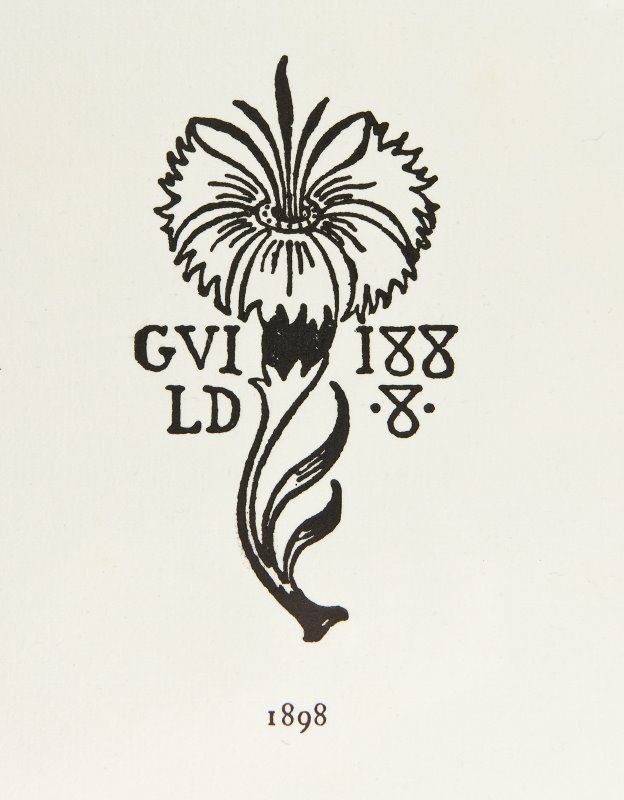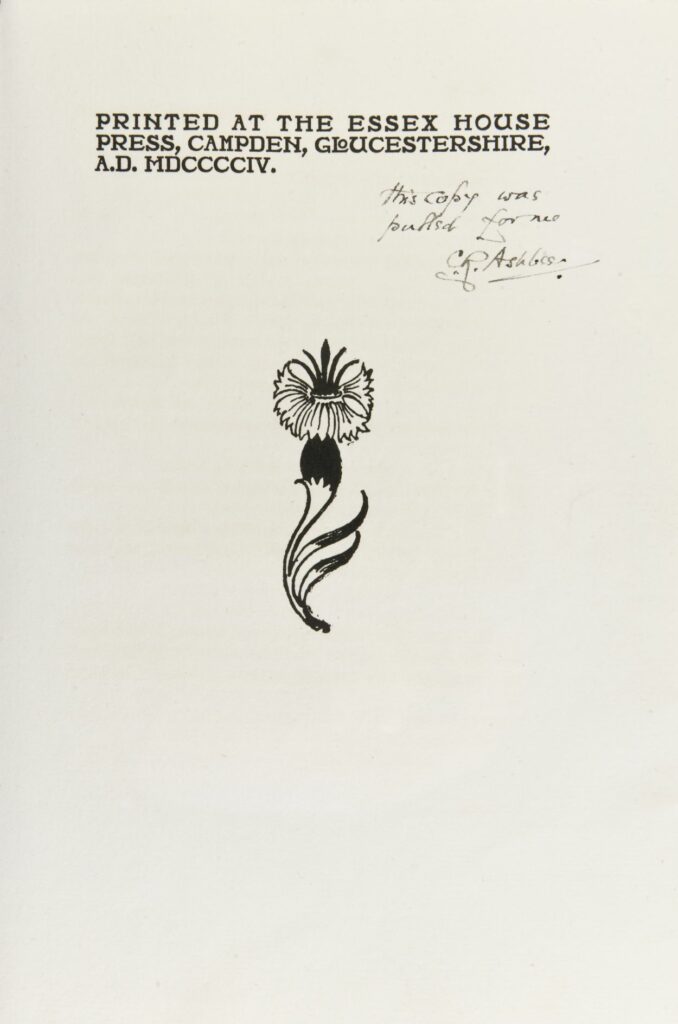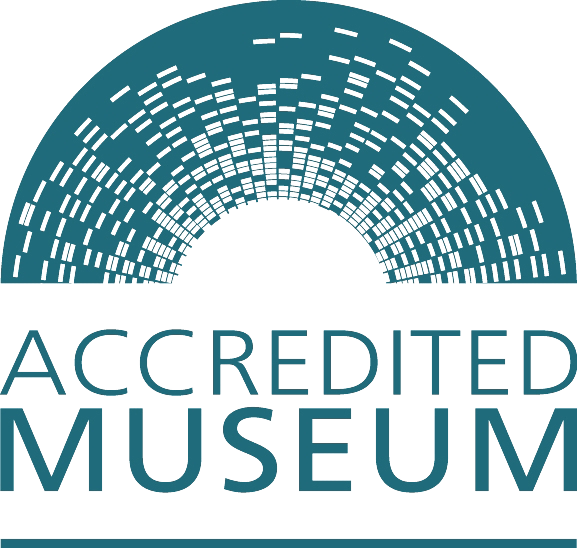
These days we can take our pick from a huge range of mass-produced printed books, from cheap paperbacks to top-of-the-range, coffee-table art volumes. A private press like the Essex House Press is special: the printer can produce works that he or she likes, and is not necessarily limited to what the public wants. The Essex House Press, set up in 1898, was C R Ashbee’s cherished endeavour in this field.
The Guild of Handicraft had bought two of William Morris’s Kelmscott Albion presses and employed three of their staff. This was Ashbee’s opportunity to create beautiful books using fine quality materials and paying attention to details of typeface, binding and illustration. He designed new fonts (‘Endeavour’ and ‘Prayer Book’) and chose the Guild’s flower, the white pink, as the symbol of the Press. The subjects he opted for reflected his personal interests, such as the ideals of the Guild and of craft production. Literature, architecture and the preservation of historic buildings also featured.

Ashbee’s enthusiasm for the project can be see in this extract from a letter which he wrote in March 1898 to his fiancée, Janet Forbes.
The great event of the week has been the purchase of the Morris press by the Guild Of Handicraft…next Monday there will be vans of presses and gages [sic] and chairs and tables and paper and machinery – lock, stock and barrel – moving East from Hammersmith. We are thinking of a musical procession!
By December of the same year the first book was published from the Guild’s headquarters at Essex House in east London. True to Ashbee’s interests it was his translation of the influential work, ‘The Treaties on Goldsmithing and Sculpture’, by the 16th C Italian master craftsman, Benvenuto Cellini. The Essex House Press version was bound in green linen.

The Essex House Press published some 90 titles in all. Thanks to the generosity of Ashbee’s daughter, Felicity, Court Barn Museum now holds this book in the largest single collection of Essex House Press books. Almost all are copies which Ashbee had set aside for himself and many are annotated or personalised by him.
Court Barn Museum has mounted exhibitions drawing on the Essex House Press books. Currently the collection is being carefully assessed for conservation and specialised cleaning. Drop in to the Museum and you may be lucky and see trained volunteers at work – they will be happy to explain the techniques they are using.
Source: An Endeavour in Printing
You might also be interested in What Made the books distinctive
+44 (0)1386 841951
admin@courtbarn.org.uk



October – March
Tuesday – Sunday 10am – 4pm
April – September
Tuesday – Sunday 10am – 5pm